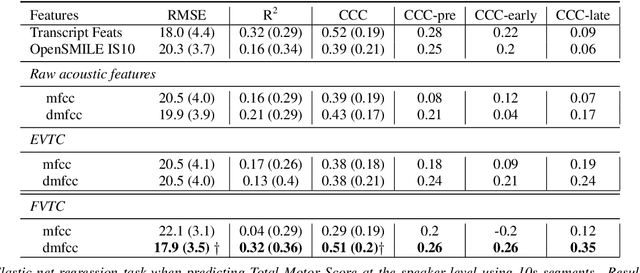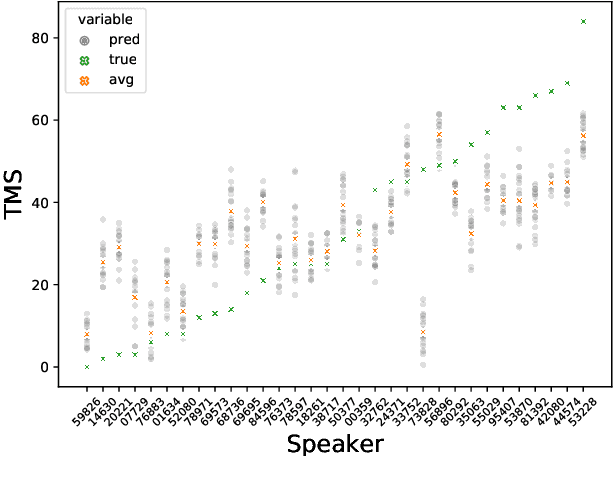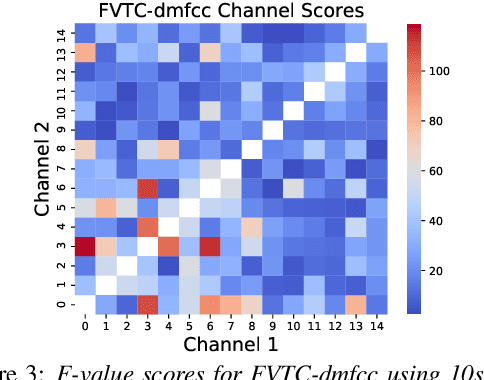Noelle Carlozzi
Articulatory Coordination for Speech Motor Tracking in Huntington Disease
Sep 28, 2021



Abstract:Huntington Disease (HD) is a progressive disorder which often manifests in motor impairment. Motor severity (captured via motor score) is a key component in assessing overall HD severity. However, motor score evaluation involves in-clinic visits with a trained medical professional, which are expensive and not always accessible. Speech analysis provides an attractive avenue for tracking HD severity because speech is easy to collect remotely and provides insight into motor changes. HD speech is typically characterized as having irregular articulation. With this in mind, acoustic features that can capture vocal tract movement and articulatory coordination are particularly promising for characterizing motor symptom progression in HD. In this paper, we present an experiment that uses Vocal Tract Coordination (VTC) features extracted from read speech to estimate a motor score. When using an elastic-net regression model, we find that VTC features significantly outperform other acoustic features across varied-length audio segments, which highlights the effectiveness of these features for both short- and long-form reading tasks. Lastly, we analyze the F-value scores of VTC features to visualize which channels are most related to motor score. This work enables future research efforts to consider VTC features for acoustic analyses which target HD motor symptomatology tracking.
Classification of Huntington Disease using Acoustic and Lexical Features
Aug 07, 2020



Abstract:Speech is a critical biomarker for Huntington Disease (HD), with changes in speech increasing in severity as the disease progresses. Speech analyses are currently conducted using either transcriptions created manually by trained professionals or using global rating scales. Manual transcription is both expensive and time-consuming and global rating scales may lack sufficient sensitivity and fidelity. Ultimately, what is needed is an unobtrusive measure that can cheaply and continuously track disease progression. We present first steps towards the development of such a system, demonstrating the ability to automatically differentiate between healthy controls and individuals with HD using speech cues. The results provide evidence that objective analyses can be used to support clinical diagnoses, moving towards the tracking of symptomatology outside of laboratory and clinical environments.
 Add to Chrome
Add to Chrome Add to Firefox
Add to Firefox Add to Edge
Add to Edge